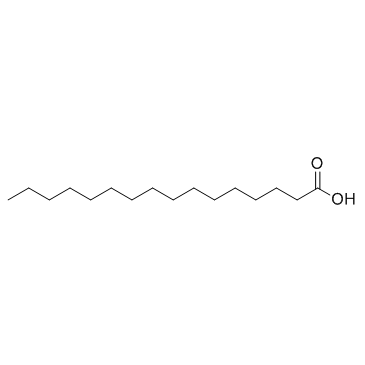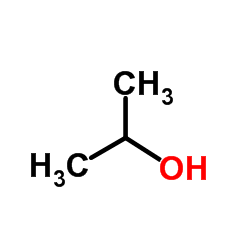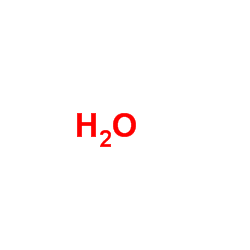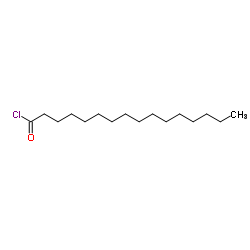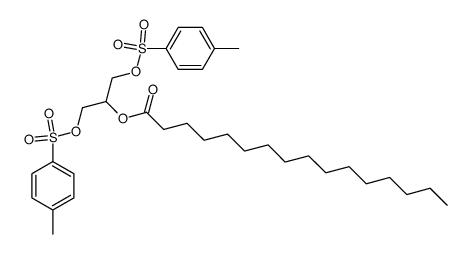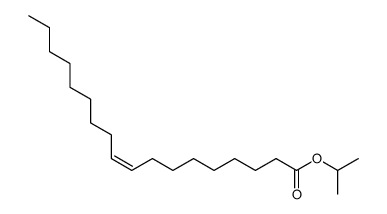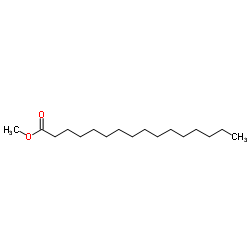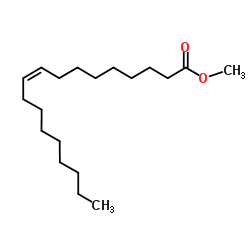Isopropyl palmitate
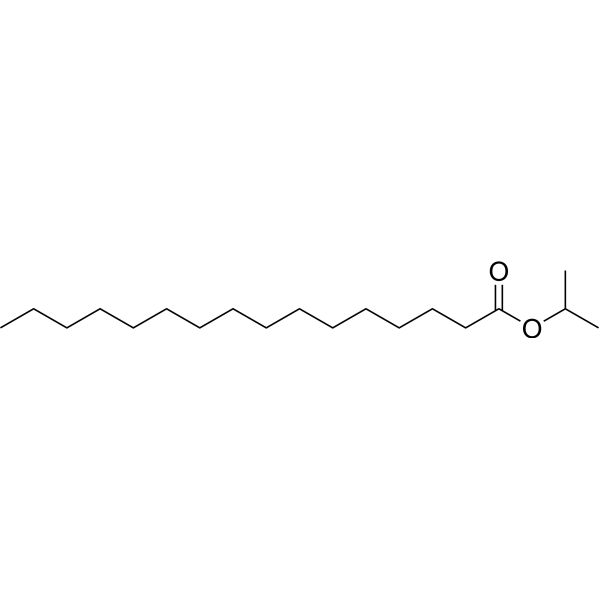
Isopropyl palmitate structure
|
Common Name | Isopropyl palmitate | ||
|---|---|---|---|---|
| CAS Number | 142-91-6 | Molecular Weight | 298.51 | |
| Density | 0.9±0.1 g/cm3 | Boiling Point | 340.7±10.0 °C at 760 mmHg | |
| Molecular Formula | C19H38O2 | Melting Point | 11-13 °C(lit.) | |
| MSDS | Chinese USA | Flash Point | 162.2±8.8 °C | |
Use of Isopropyl palmitateIsopropyl palmitate is an fatty acid ester. Isopropyl palmitate can be used for design and characterization of bioactive bilayer films. The bilayer membrane not only has the ability to scavenge free radicals and inhibit lipid peroxidation, but also can inhibit the growth of known foodborne pathogens. Isopropyl palmitate can be used as an excipient, such as lubricant, oily carrier, solvent, controlled-release transdermal film. Pharmaceutical excipients, or pharmaceutical auxiliaries, refer to other chemical substances used in the pharmaceutical process other than pharmaceutical ingredients. Pharmaceutical excipients generally refer to inactive ingredients in pharmaceutical preparations, which can improve the stability, solubility and processability of pharmaceutical preparations. Pharmaceutical excipients also affect the absorption, distribution, metabolism, and elimination (ADME) processes of co-administered drugs[1][2]. |
| Name | isopropyl palmitate |
|---|---|
| Synonym | More Synonyms |
| Description | Isopropyl palmitate is an fatty acid ester. Isopropyl palmitate can be used for design and characterization of bioactive bilayer films. The bilayer membrane not only has the ability to scavenge free radicals and inhibit lipid peroxidation, but also can inhibit the growth of known foodborne pathogens. Isopropyl palmitate can be used as an excipient, such as lubricant, oily carrier, solvent, controlled-release transdermal film. Pharmaceutical excipients, or pharmaceutical auxiliaries, refer to other chemical substances used in the pharmaceutical process other than pharmaceutical ingredients. Pharmaceutical excipients generally refer to inactive ingredients in pharmaceutical preparations, which can improve the stability, solubility and processability of pharmaceutical preparations. Pharmaceutical excipients also affect the absorption, distribution, metabolism, and elimination (ADME) processes of co-administered drugs[1][2]. |
|---|---|
| Related Catalog | |
| References |
| Density | 0.9±0.1 g/cm3 |
|---|---|
| Boiling Point | 340.7±10.0 °C at 760 mmHg |
| Melting Point | 11-13 °C(lit.) |
| Molecular Formula | C19H38O2 |
| Molecular Weight | 298.51 |
| Flash Point | 162.2±8.8 °C |
| Exact Mass | 298.287170 |
| PSA | 26.30000 |
| LogP | 8.49 |
| Vapour Pressure | 0.0±0.7 mmHg at 25°C |
| Index of Refraction | 1.443 |
| Storage condition | 2-8°C |
CHEMICAL IDENTIFICATION
HEALTH HAZARD DATAACUTE TOXICITY DATA
|
| Personal Protective Equipment | Eyeshields;full-face respirator (US);Gloves;multi-purpose combination respirator cartridge (US);type ABEK (EN14387) respirator filter |
|---|---|
| Hazard Codes | Xi:Irritant |
| Risk Phrases | R36/37/38 |
| Safety Phrases | S26-S36 |
| RIDADR | NONH for all modes of transport |
| WGK Germany | - |
| RTECS | RT4900000 |
| HS Code | 2915709000 |
|
~65% 
Isopropyl palmitate CAS#:142-91-6 |
| Literature: US2004/106813 A1, ; Page 3 ; |
|
~98% 
Isopropyl palmitate CAS#:142-91-6 |
| Literature: Burger; Greyling; Spies Journal of Chemical Ecology, 1999 , vol. 25, # 9 p. 2099 - 2108 |
|
~% 
Isopropyl palmitate CAS#:142-91-6 |
| Literature: Journal of the American Oil Chemists' Society, , vol. 24, p. 257 |
|
~% 
Isopropyl palmitate CAS#:142-91-6 |
| Literature: Journal of Organic Chemistry, , vol. 78, # 6 p. 2386 - 2396 |
|
~% 
Isopropyl palmitate CAS#:142-91-6 |
| Literature: Australian Journal of Chemistry, , vol. 30, p. 2487 - 2492 |
|
~% 
Isopropyl palmitate CAS#:142-91-6 |
| Literature: Australian Journal of Chemistry, , vol. 30, p. 2487 - 2492 |
|
~% 
Isopropyl palmitate CAS#:142-91-6 |
| Literature: Australian Journal of Chemistry, , vol. 30, p. 2487 - 2492 |
|
~% 
Isopropyl palmitate CAS#:142-91-6 |
| Literature: JAOCS, Journal of the American Oil Chemists' Society, , vol. 81, # 4 p. 331 - 337 |
| HS Code | 2915709000 |
|---|---|
| Summary | 2915709000. palmitic acid and its salts and esters. VAT:17.0%. Tax rebate rate:13.0%. . MFN tariff:5.5%. General tariff:30.0% |
|
Transdermal delivery of curcumin via microemulsion.
Int. J. Pharm. 481(1-2) , 97-103, (2015) The objective of this study was to evaluate the transdermal delivery potential of a new curcumin-containing microemulsion system. Three series of experiments were carried out to comprehend the system ... |
|
|
Comparative percutaneous permeation study using caffeine-loaded microemulsion showing low reliability of the frozen/thawed skin models.
Int. J. Pharm. 471(1-2) , 516-24, (2014) The aim of this study was to explore the transdermal delivery potential of a new caffeine-containing microemulsion system. The skin permeability of caffeine (CAF) was measured in vitro using skin exci... |
|
|
Transcutaneous delivery of leflunomide nanoemulgel: Mechanistic investigation into physicomechanical characteristics, in vitro anti-psoriatic and anti-melanoma activity.
Int. J. Pharm. 487 , 148-56, (2015) The present study is a mechanistic validation of 'proof of concept' of effective topical delivery of leflunomide (LFD) nanoemulgel for localized efficient treatment of psoriatic lesions as well as mel... |
| Hexadecanoic acid 1-methylethyl ester |
| Isopropyl hexadecanoate |
| Hexadecanoic acid, 1-methylethyl ester |
| Isopropyl palmitate |
| Palmitic Acid Isopropyl Ester |
| propan-2-yl hexadecanoate |
| MFCD00008993 |
| EINECS 205-571-1 |
